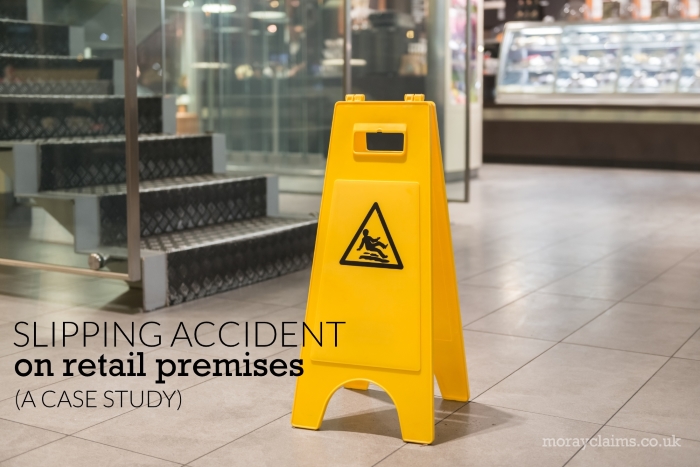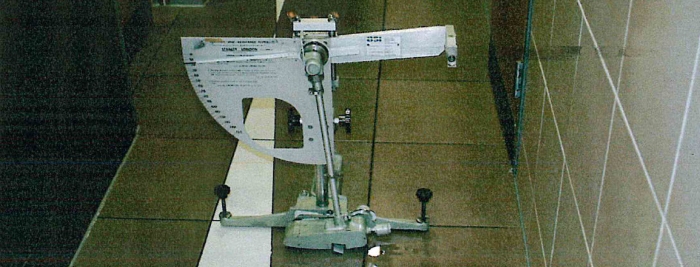
Ms S visited a fast food restaurant in Elgin at the end of a night out.
She needed to use the customer toilets.
She went through the door from the restaurant into the ceramic-tiled corridor which led to the toilets.
Though she did not notice the fact until after she had fallen, the floor was wet. This caused her to slip.
As a result of her fall, she suffered an injury to her back.
A “wet floor” sign was put out in the corridor, immediately following her accident.

She reported her accident to a member of staff at the time but it was not until the next day that she realised the severity of the injury. She had the presence of mind to write a letter to the manager of the fast food restaurant informing him of the fact and details of her accident.
Grigor & Young made a compensation claim on Ms S’s behalf, in this case.
At all times, liability was denied.
The fast food restaurant did not accept that, in fact, the floor had been wet at the time. They did not accept that they had caused Ms S to suffer her accident.
With the benefit of legal aid, it was possible to get an orthopaedic medical report to establish the extent of the injury attributable to the accident.
It was also possible to engage the services of a slip resistance expert to carry out testing at the locus of the accident.
The insurers for the fast food restaurant were not prepared to accept – without scientific proof – that the floor at the locus became slippery when wet.
Slip resistance testing carried out by the expert we instructed showed that, in common with the flooring types found in most fast food restaurants, the floor at the locus had a high slip resistance when dry but a low slip resistance when wet.
Slip resistance testing carried out at the locus using a Wessex Pendulum Tester gave average resistance values of about 46 when the floor was dry and about 17 when the floor was wet.

Slip Resistance Values (SRVs) between 35 and 65 denote a low slip risk (towards the “slipperiness” of sandpaper). SRVs of 25 or less indicate high slip risk (towards the slipperiness of ice).
The claim was ultimately successful.
After the raising of an action at Elgin Sheriff Court, this claim settled on a full liability basis, though without any formal admission of liability. The insurers for the premises accepted there was a significant risk that we would establish breach of duty on the part of the restaurant, based on occupiers’ liability.
Factors we think had a bearing on the fast food restaurant’s insurers’ decision (finally) to negotiate settlement, following the raising of proceedings, were the fact that:
- the locus was in the vicinity of customer toilets;
- the corridor was used by people of all ages;
- it was reasonably foreseeable that the floor would become wet at the locus;
- people using corridor likely to be looking for the customer toilets were exactly, rather than looking at the floor to see where they were placing their feet; and,
- in any event, the fact that water on the floor would be difficult to see against the tiles.
It was never clear how the floor had come to get wet at the locus.
It could have been due to cleaning carried out by members of staff. Alternatively, the water could have got there accidentally via a customer’s hands or feet.
A temporary “wet floor” sign might have prevented the accident and it was arguable that, given the risk that water could accidentally get onto the floor by a number of different means, there should have been a permanent sign (on the restaurant side of the door from the restaurant leading to the toilets) to warn of the risk of a wet – and slippery – floor. The SRVs gathered from testing at the locus showed that this was a floor which would become pretty slippery when it was wet.
How we can help
We hope you have found this case study – about a successful claim for personal injury compensation following a slipping accident on retail premises – to be of interest.
If you have any questions about an issue raised by this article or about any aspect of our personal injury claims services, generally, please get in touch.
All initial enquiries are free of charge and without obligation. Call us on 01343 544077 or send us a Free Online Enquiry.
Make A Free Online Enquiry Now